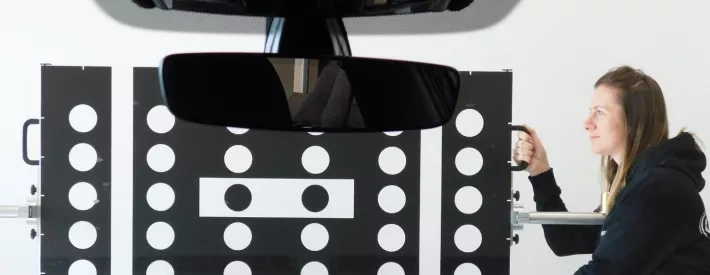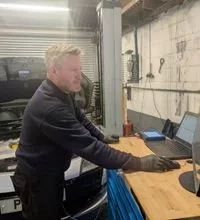Why getting ADAS-qualified is crucial for your career (and the industry's success)

The latest statistics are in, and the IMI’s ADAS TechSafe Technician Forecast for July shows that 4,425 Technicians are qualified to work on driver assistance systems. The issue is, that represents just 2% of all Technicians.
And the number of vehicles on the road with ADAS technology embedded is creeping up, shifting from 12% to 13% since the previous IMI report in March. It means the industry is playing catch up and is in danger of the skills gap widening. Everyone in the industry needs to be aware of how swift the uptake in ADAS systems is and what the future holds.
Dean Lander Head of Repair Sector Services at Thatcham Research says: “We saw the first variants of ADAS fitted to vehicles in 2010. Thatcham Research was highly involved in setting the original standards for autonomous emergency braking, encouraging the fitment of that technology for high-value safety reasons. It’s now adopted in Euro NCAP, it's adopted as part of the insurers' group rating system, and now, advanced ADAS systems are incorporated as part of the General Safety Regulations GSR2 across Europe.”
Lander also explains that the Autonomous Vehicles Act is another part of the puzzle that means we're now at the base of the rapid rise curve for ADAS technology.
“It's almost now if you're going to look and buy a car, you don't even ask the question anymore, "Has it got ADAS on it?" It's like a seat belt, of course it has it, it's part of the regulation,” he says.
Train to win
There will be obvious concerns for people and businesses about how much time and money ADAS training will take. Luckily, just as the technology develops, so does the availability of courses and qualifications.
“The training is now far easier and simpler to access. Thatcham, IMI, others, provide a significant amount of this training digitally. It's available without leaving the workplace, without going to a college or academy to do the underpinning knowledge. The practical technical training, depending on the course you pick and the level of qualification you require, it's normally a two to three-day course, it's not a significant amount of time,” says Lander
Cost is also coming down. Like any competitive market, more people now have training offerings and therefore, the cost of those training offerings is far more reasonable today than they were when there were only two or three options available.
Of course, it’s a continuous process and once initial training is completed it’s important to make sure you keep that skill level up through CPD work.
Opportunity knocks
The rise of ADAS systems creates an enormous opportunity for those who upskill. With more vehicles on the road with ADAS systems the likelihood of customers looking for businesses with the skills to work on them increases.
“You want to take commercial advantage of the fact that ADAS calibration is a task that is chargeable, whether that be to the consumer or work provider. If you're not taking advantage of that opportunity, somebody else is.
“The return on investment curve is far more rapid than it was if you invested in this five years ago and now the training will pay for itself much quicker because [of the number of ADAS-fitted vehicles on the road,” says Lander.
ADAS-equipped vehicle numbers are only growing, legislation and customer expectation are driving the expansion. Getting onboard now with the skills needed to work on the technologies will put you and your business in a stronger position to benefit from the growth.
Check out how the IMI could help you develop your skills with its range of courses, qualifications and accreditations.
Keep up to date with the latest industry research from the IMI.




